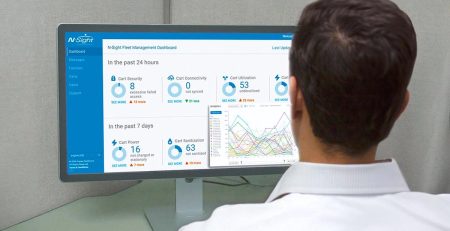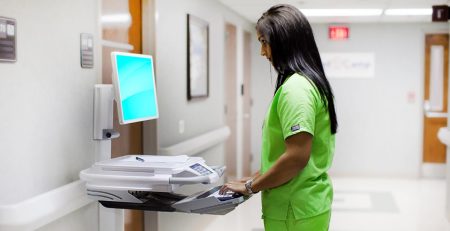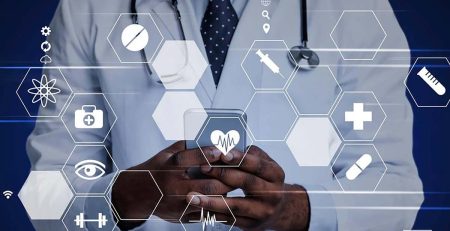Harnessing the Power of Clinical Information Systems
In an era of rapid technological advancements, the healthcare industry is undergoing a major transformation with the integration of clinical information systems. These systems have the potential to revolutionize the way healthcare is delivered, creating better patient outcomes, and driving down costs. But what exactly are clinical information systems and how do they work?
Clinical information systems are comprehensive software platforms that enable healthcare providers to store, manage, and analyze patient data. By digitizing medical records, treatment plans, and other critical information, these systems streamline workflow processes, enhance communication among healthcare professionals, and improve patient safety. From electronic health records (EHRs) and computerized physician order entry (CPOE) systems to decision support tools and telemedicine platforms, clinical information systems enable a more efficient and seamless healthcare experience for both patients and providers.
In this article, we explore the future of healthcare and delve into the potential impact of clinical information systems on the industry. We examine key advantages, challenges, and trends shaping the adoption and implementation of these systems. Get ready to discover how clinical information systems are harnessing the power of technology to transform the way healthcare is delivered.
Key Features and Benefits of Clinical Information Systems
Clinical information systems offer a wide range of features and benefits that are transforming the healthcare landscape. One key feature is the ability to digitize and store patient records electronically. This eliminates the need for paper-based records, reducing the risk of errors and ensuring that patient information is easily accessible to healthcare providers. Electronic health records (EHRs) allow for a comprehensive view of a patient’s medical history, including past diagnoses, medications, allergies, and lab results. This enables healthcare professionals to make more informed decisions and provide personalized care.
Another important feature of clinical information systems is computerized physician order entry (CPOE). This allows healthcare providers to enter medication orders and other treatment plans directly into the system, eliminating the need for handwritten prescriptions. CPOE systems have been shown to reduce medication errors and improve patient safety. They also enable healthcare providers to easily track and monitor patient progress, ensuring that treatments are effective and appropriate.
Decision support tools are another valuable component of clinical information systems. These tools use algorithms and data analytics to provide evidence-based recommendations and alerts to healthcare providers. For example, decision support tools can alert a doctor if a prescribed medication may interact negatively with a patient’s existing medications or allergies. This helps healthcare providers make more informed decisions, reducing the risk of adverse events and improving patient outcomes.
Telemedicine platforms are also gaining traction in clinical information systems. These platforms allow for remote consultations and virtual visits, enabling patients to access healthcare services without the need for in-person appointments. Telemedicine has the potential to improve access to healthcare, especially for patients in remote areas or those with limited mobility. It also reduces the burden on healthcare facilities and allows for more efficient use of resources.
Overall, clinical information systems offer numerous benefits, including improved efficiency, enhanced communication, better patient outcomes, and cost savings. By digitizing and integrating patient data, these systems enable healthcare providers to deliver more personalized and effective care.
“The integration of clinical information systems has a transformative impact on healthcare delivery. By improving communication, streamlining workflows, enhancing patient safety, and driving cost savings, these systems have the potential to revolutionize the way healthcare is delivered.”
The Impact of Clinical Information Systems on Healthcare Delivery
The integration of clinical information systems has a profound impact on healthcare delivery. One of the key benefits is the improvement in communication and collaboration among healthcare professionals. With clinical information systems, healthcare providers can easily share patient information, test results, and treatment plans across different departments and care settings. This eliminates the need for manual transfer of information and reduces the risk of miscommunication or delays in care.
Furthermore, clinical information systems enable more efficient and streamlined workflow processes. With electronic health records and computerized physician order entry systems, healthcare providers can access and update patient information in real-time. This eliminates the need for paper-based records and reduces the risk of errors or lost data. It also allows for faster and more accurate diagnosis and treatment, improving patient outcomes.
Clinical information systems also have a positive impact on patient safety. By digitizing and centralizing patient data, healthcare providers can easily access critical information such as allergies, medications, and test results. This reduces the risk of medication errors, adverse drug reactions, and other preventable incidents. Decision support tools further enhance patient safety by providing evidence-based recommendations and alerts to healthcare providers.
Another significant impact of clinical information systems is the potential for cost savings. By reducing the reliance on paper-based records and streamlining workflow processes, these systems improve efficiency and productivity. This can lead to significant cost savings for healthcare facilities, as well as reduced administrative burden for healthcare providers. Additionally, clinical information systems can help identify inefficiencies and areas for improvement in healthcare delivery, enabling organizations to optimize resource allocation and reduce waste.
The integration of clinical information systems has a transformative impact on healthcare delivery. By improving communication, streamlining workflows, enhancing patient safety, and driving cost savings, these systems have the potential to revolutionize the way healthcare is delivered.
Training and Education Opportunities for Healthcare Professionals
As the embraces clinical information systems, it is crucial for healthcare professionals to receive the necessary training and education to effectively utilize these systems. The adoption of clinical information systems requires a shift in mindset and the development of new skills to fully leverage the potential benefits they offer.
One of the key aspects of training in clinical information systems is the understanding and utilization of electronic health records (EHRs). EHRs are digital versions of a patient’s paper charts that contain their medical history, diagnoses, medications, and other important health information. Healthcare professionals need to be trained on how to navigate and input data into EHRs accurately. This includes documenting patient encounters, entering medication orders, and accessing test results. Training programs should focus on teaching healthcare professionals how to effectively use EHRs to enhance patient care, improve communication, and reduce medical errors.
Another important area of training is the use of computerized physician order entry (CPOE) systems. CPOE systems allow healthcare professionals to enter and manage patient orders electronically, replacing the traditional method of handwritten orders. This eliminates the risk of misinterpretation and transcription errors, resulting in improved patient safety. Training programs should emphasize the importance of proper utilization of CPOE systems, including order entry, order verification, and order management.
Furthermore, healthcare professionals should be trained on decision support tools integrated into clinical information systems. These tools use algorithms and data analysis to provide evidence-based recommendations for diagnosis, treatment, and patient management. Training programs should educate healthcare professionals on how to interpret and apply these recommendations to make informed decisions that align with best practices and guidelines.
In addition to technical training, healthcare professionals should also receive education on the ethical and legal aspects of clinical information systems. This includes understanding patient privacy and confidentiality, data security, and compliance with regulatory requirements. Healthcare professionals should be aware of the potential risks and challenges associated with clinical information systems and be equipped with the knowledge to mitigate them effectively.
Overall, training and education opportunities for healthcare professionals in clinical information systems are essential to ensure successful implementation and utilization of these systems. By investing in comprehensive training programs, healthcare organizations can empower their workforce to embrace technology and leverage clinical information systems to their full potential.
Convergint-IMS offers ergonomically crafted cart solutions, mobile workstations, specialized medical and supply carts, along with furniture designed with continuous clinical input to accommodate the dynamic nature of healthcare environments.
Medical Equipment & Healthcare Solutions
Connect with Convergint at (800) 968-3135 to learn more about our commitment to delivering exceptional results to our customers through unparalleled customer service.

















